041924 Spring Geotechnical Seminar
Thank you to our sponsors!
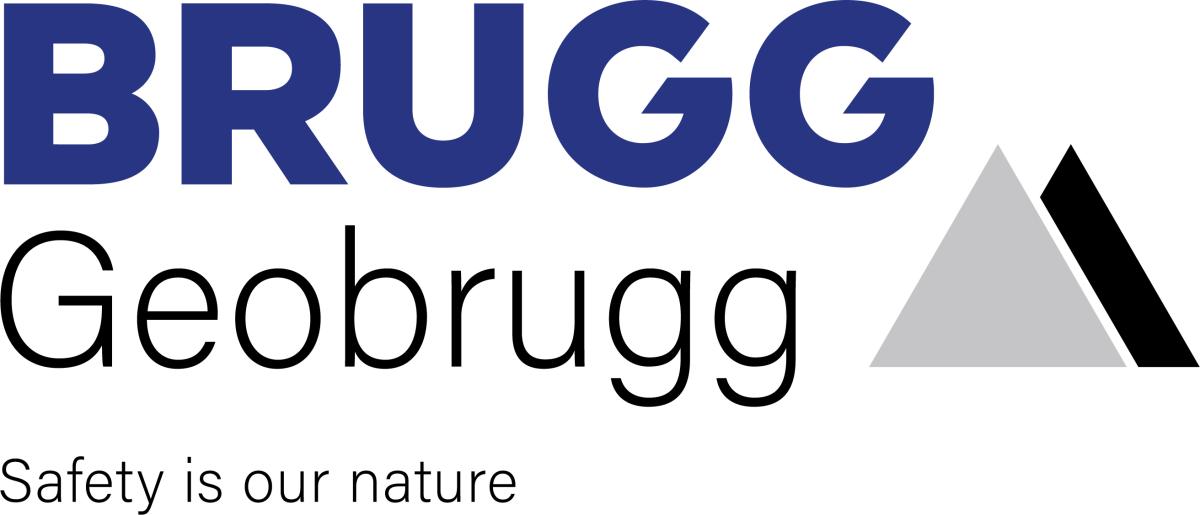

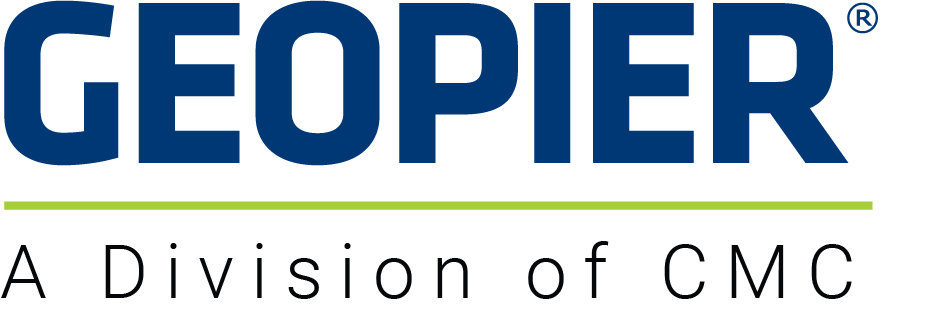
The Connecticut Valley Chapter of the ASCE Geo-Institute is pleased to announce its 2024 Spring Geotechnical Seminar with the theme of Coastal Geotechnics & Resilience on Friday, April 19, 2024, at TPC River Highlands, 1 Golf Club Road, Cromwell, CT. This full day event will explore the geotechnics of coastal regions and resilience in geotechnical design and construction. Six (6) New York State Professional Development Hours (NYS PDHs) will be offered.
Proceeds from Geo-Institute continuing educational activities support CSCE scholarships.
Douglas Gaffney, P.E., BC.CE, Atkins Realis
Mr. Gaffney is Atkins Realis’ U.S. Practice Lead for Port and Coastal Resiliency. He is a Professional Engineer in New York, New Jersey and Pennsylvania and a Board-certified Coastal Engineer. He has a Master of Science degree in Marine Studies (Applied Ocean Sciences) from the University of Delaware and a Bachelor of Science degree in Marine Engineering from the United States Merchant Marine Academy in NY. He started his career with the US Army Corps of Engineers Philadelphia District as a coastal planner. Since then, he has worked in manufacturing, bringing geosynthetic products to the civil engineering market, and engineering consulting both domestically and internationally.
Mr. Gaffney has been providing post-storm recovery, nature-based solutions and coastal resiliency solutions to municipalities, governments and private clients for over three decades.
Integrating Climate Change into the Design of Coastal Infrastructure
Climate change is affecting the natural processes that must be accounted for when designing waterfront and coastal structures. The three most important processes along the coastal zone are sea level rise, precipitation and storm intensity. Sea level rise raises the elevation where waves affect the shoreline and increases overtopping and flooding, changes in precipitation also contribute to flooding, and storm intensity can result in higher storm surge and overwhelmed stormwater conveyances.
Conversely, the desire to increase resilience and reduce carbon footprint are influencing both the design and choice of materials for waterfront solutions. For example, some communities are encouraging the use of low carbon Portland cement, and many agencies are working toward nature-based solutions and living shorelines. New innovative approaches will be presented.
Climate change adaptation can be applied to ports and waterways, vegetated buffers, amendment of dredged materials, structures such as seawalls and revetments, and beaches. Resilient systems will be defined. A major goal of adaptation is to allow adjustment of the waterfront feature to provide a greater level of resilience in the future.
This presentation will review methods of quantifying resilience to climate change stressors, to help make wise resource decisions. This approach can lead to the development of trigger points for implementing adaptation activities.
Katrina T. Perez Mejia, P.E., and John DiGenova, P.E., Haley & Aldrich
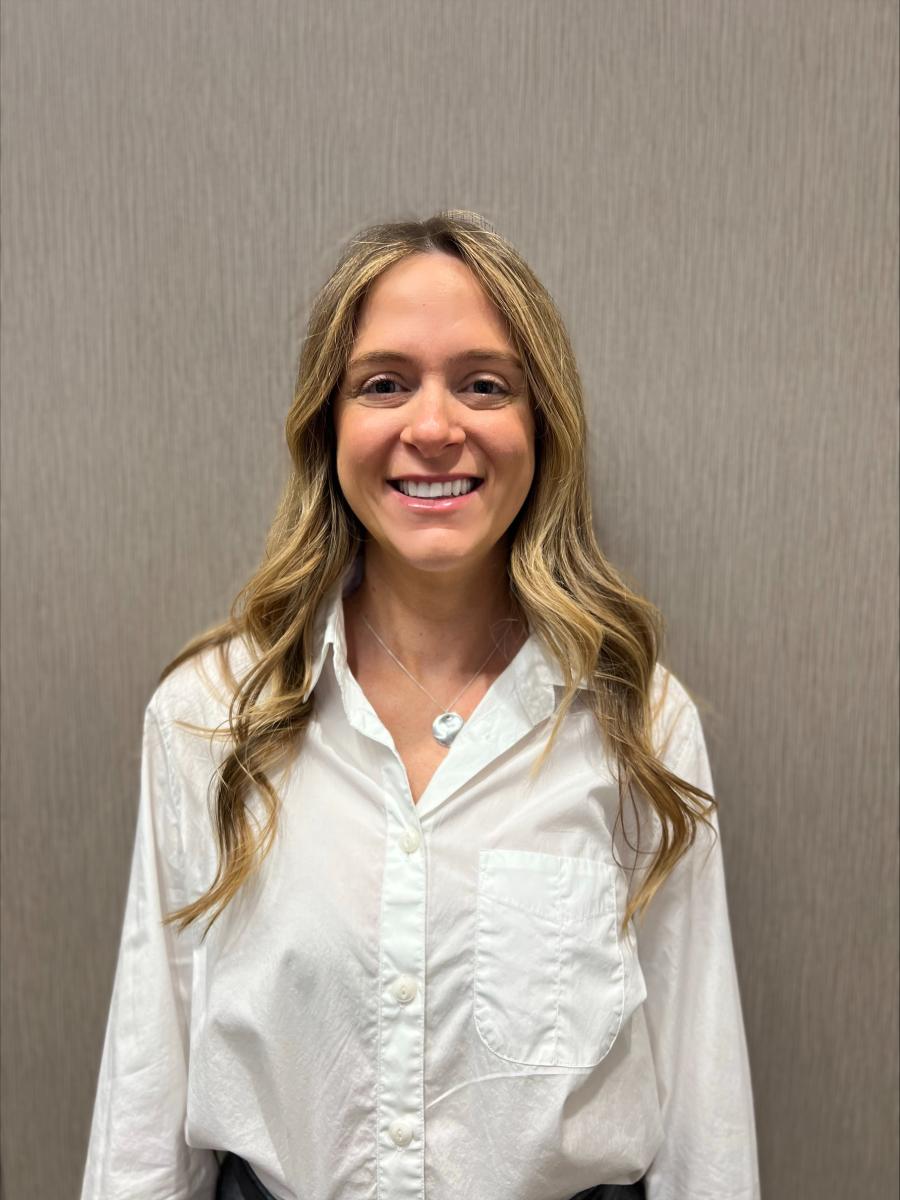
Katrina T. Perez Mejia, P.E., LEED Green Associate, Project Manager, has over 10 years of geotechnical engineering design experience on projects ranging from institutional, commercial, residential, marine structures, roadways, electric transmission lines, and substations. Her project experience includes subsurface explorations, design of shallow and deep foundations, lateral earth support systems, pile load tests, tiebacks and rock anchors, pavement design, earthwork, underpinning, vibration monitoring, and contract document preparation. Some of her projects include New London State Pier, Pier 31 and Pier 8 at the Groton, CT Navy Base, several institution buildings for CT and NY universities, and residential structures for developers.

John DiGenova, P.E., has over 40 years of diverse geotechnical engineering experience predominantly in marine structures, bridges/highways, pavements, and water storage tanks. He is the lead geotechnical engineer for Haley and Aldrich for marine structures. His experience also includes drilled shafts, cellular cofferdams, piles, pile load tests, tiebacks and rock anchors, mechanically stabilized earth (MSE) walls, pavement design, geosynthetics, earthwork, underpinning designs, and slurry walls. Some of his projects include USS Constitution Berthing, The New London State Pier, Superflood Basin at Portsmouth Naval Shipyard, Hotlanes Pavement Design (beltway Washington DC), over 500 water storage tank projects throughout the United States, and New Drydocks at Portsmouth Naval Shipyard. He has projects all over the United States and overseas and is licensed in 26 states.
Redevelopment of the New London State Pier into the First Operational United States Based Offshore Wind Farm Terminal
A partnership between the Connecticut Port Authority and State of Connecticut together with Eversource and Ørsted, the Danish wind giant, has established the first offshore wind port in New England that will support staging, assembly, and deployment of wind turbines. The State Pier Complex is located approximately 3 miles upstream of the Thames Rivers outlet into the Long Island Sound and consists of the State Pier and Central Vermont Railroad (CVRR) Pier, as well as an approximately 25-acre Uplands area which also includes railroad access. The total area of the site is about 45 acres.
The geology at the site consists of recent undifferentiated fill soils, deposited within the last 100 years, over very soft organic and medium dense to dense glaciofluvial deposits. Dense glacial till and bedrock was encountered relatively deep at the project site.
The earliest development at the State Pier Complex dates back to 1876, when the Central Vermont Railroad commissioned the CCVRR Pier. Besides the challenging subsurface conditions at the site, the proposed development also needed to take into account a complex history of development at the site over the past 145 years.
The State Pier Complex redevelopment required major site improvements for the ability to support offshore wind projects. Thus, the geotechnical components of the development are both extensive and challenging, as described below.
State Pier and CVRR Renovations: Construction of one large pier (about 1,000 ft long by 650 ft wide) by sealing off the ends of the State and CVRR Piers with the installation of a new King-Pile tied-back bulkhead between them, then creating land in this area by infilling. Most of the infill area is designed to support 1,000 lbs per square foot (psf) uniform loads and up to 3,000 psf transportation loads. As such, soil improvement consisting of vibrocompaction was planned to improve the soils placed underwater, to support the planned loads, as well as to prevent liquefaction and excessive settlement.
Installation Berth: The installation berth is where the installation vessel gets loaded with the various components of the wind turbines that are to be taken offshore for installation. The new berth is located along the east side of the State Pier and includes a pile-supported relieving platform that will support loads up to 5,000 psf. A King-Pile toe-wall is constructed adjacent to the new berth to support the riprap slope embankment underneath the State Pier, and to allow for future dredging activities.
Delivery Berth: The delivery berth allows for delivery vessels to offload equipment onto land. Similarly to the installation berth, the delivery berth includes a pile-supported relieving platform that will support loads up to 5,000 psf. A new King-Pile bulkhead is constructed to replace the existing bulkhead in this area and is supported by deadman anchor piles, where not supported monolithically by the relieving platform.
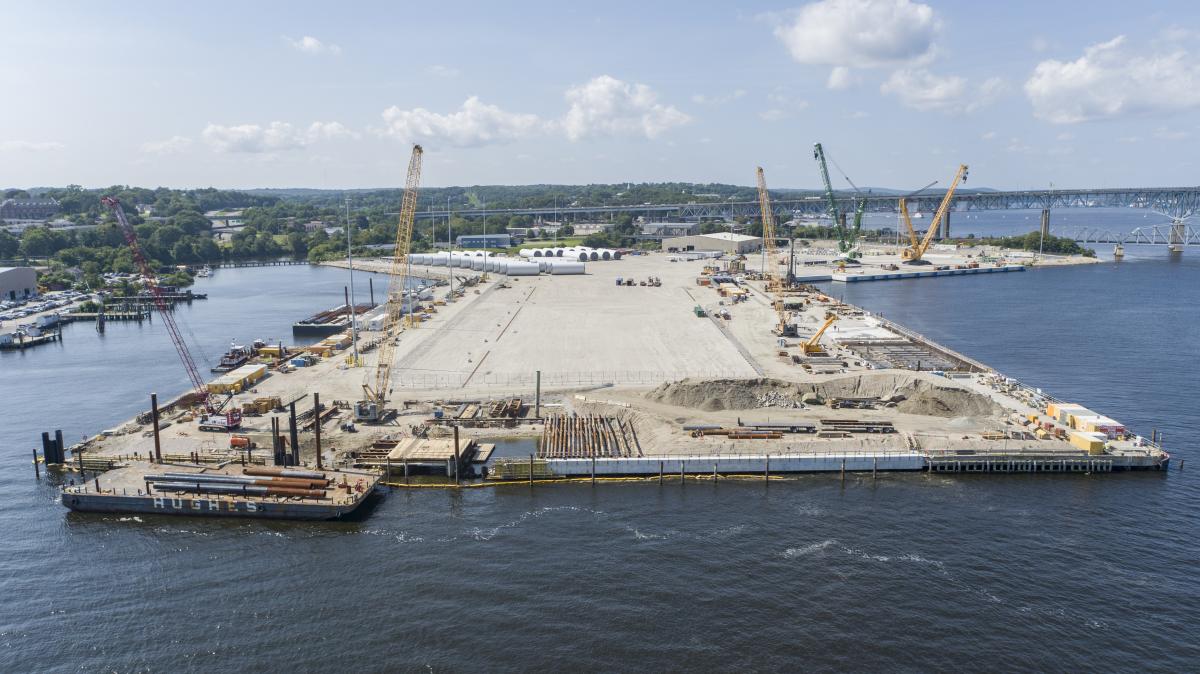
Daniela Zellers, P.E., and Mangtao (Monty) Du, P.E., WSP

Daniela (Bastos) Zellers is a Assistant Vice President and Senior Technical Principal with WSP, with over 20 years of experience in geotechnical field investigation, design, project management and construction on multidisciplinary projects. She has performed and supervised the design of deep and shallow foundations, retaining walls and excavation support; analyzed slope stability and ground consolidation; prepared and evaluated testing programs for geotechnical parameters; prepared geotechnical reports, contract drawings and specifications; reviewed contractor submittals and change orders; and managed subsurface investigation projects and coordinated with owners, contractors, multi-disciplinary managers, and field personnel.

Monty Du is a Senior Vice President and Senior Director at WSP USA. A longtime resident in Connecticut, Mr. Du is one of the leaders in WSP’s national Geotechnical & Tunneling practice, with a focus on the New England market. He has over 29 years of experience in geotechnical engineering with a diverse practice encompassing bridges, ports and marine structures, tunnels, buildings, airports, dams and levees, railroads, environmental remediation, and industrial facilities. He is passionate over exploring, analyzing, and improving the physical world around us and solving problems when they inevitably arise during design and construction. Mr. Du performs engineering with 100% commitment: whether it is for raising the Bayonne Bridge 64 feet for navigation clearance, building heavy wind ports throughout the Northeast, or design and construction of the deep foundations holding up the Second Bangkok International Airport through the deep, ever-settling, soft clays. His specialty includes deep foundations, ground improvement, tunneling, earth retaining structures, slope stabilization, cofferdams, temporary and permanent SOE and dewatering systems, and geotechnical earthquake engineering. Throughout his career, he has served as an engineer, team leader, project manager, operations manager, as well as a mentor to younger members of the engineering profession. Besides his strong technical aptitude and project experience, he is well-versed in business development, staff development and team building in the engineering consulting environment.
Geotechnical Aspects on Design and Construction of the Living Breakwaters Project
The Living Breakwaters project aims to reduce the impact of climate-intensified events on a coastal community which experienced extremely damaging waves and tragic loss of life during Superstorm Sandy. The project consists of approximately 2400 linear feet (730 linear meters) of near-shore breakwaters that will attenuate waves, reduce erosion, and provide habitat spaces for local marine life along the south shore of Staten Island, New York, USA. The system consists of eight rubble mound breakwater structures with a stone core, a base layer (bedding stone or marine mattresses) and outer layers of armor stones.
This presentation will discuss geotechnical subsurface conditions, design, and construction of the breakwater system. The geotechnical design was predominately governed by global slope stability analyses. Several construction challenges were encountered with the fabrication and deployment of marine mattresses and underwater geotextile installation.
This project is considered a model for climate-adaptive green infrastructure that will create calmer near-shore waters and wider beaches, reducing risk from coastal storms and enhancing life along the shoreline.
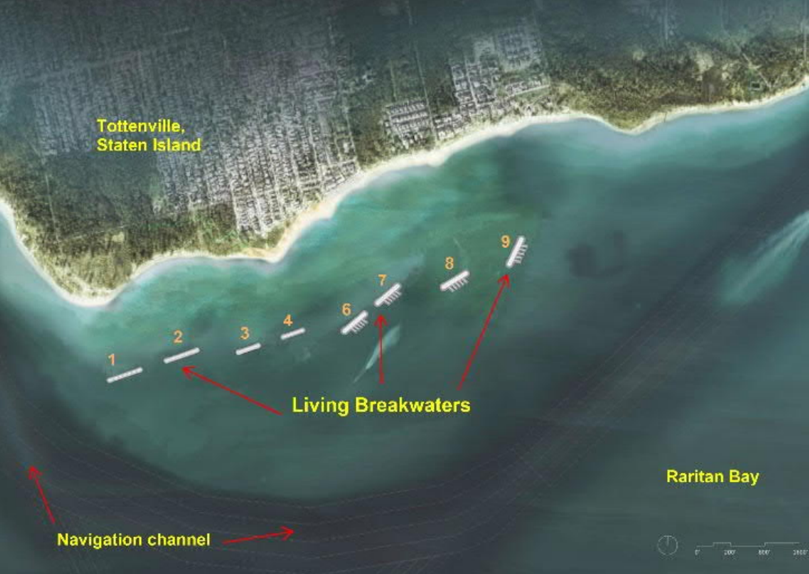
Steve Sternberg, P.E., RACE Coastal Engineering
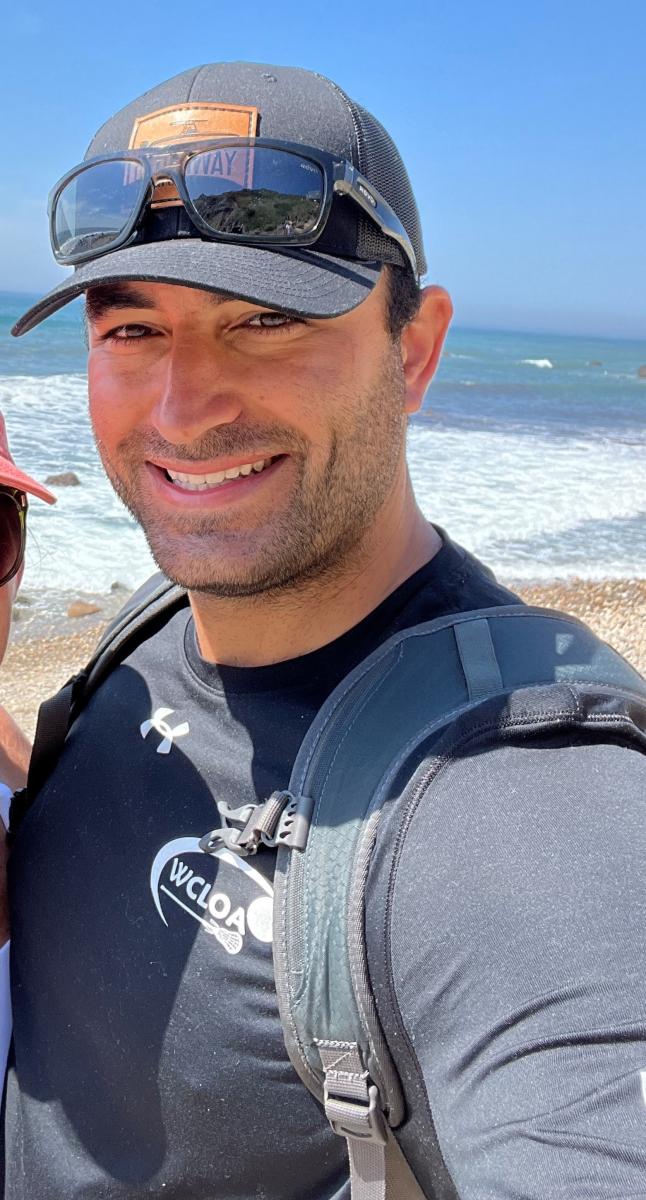
Steve Sternberg is a Project Manager/Partner at RACE Coastal Engineering (RACE) in Stratford, CT. RACE is a premiere waterfront engineering company providing coastal, shoreline, and marine engineering services throughout Connecticut, the Northeast, and beyond for nearly 25 years. Steve is a Licensed Professional Engineer with over 13 years of experience in the inspection, design, and construction related review of coastal infrastructure including seawalls, bulkheads, piers, docks, revetments, and jetties. Steve holds a bachelor’s degree in Civil (Structural) Engineering from Manhattan College, and an Graduate Certificate in Coastal Engineering from Old Dominion University. Steve resides in Easton, CT with his wife Diana, two boys Drake (4) and Luke (2) and dog, Kota.
Applied Coastal Engineering for Geotechnical Solutions
The coastal area is highly dynamic and requires that shoreline infrastructure be designed to withstand the highly volatile, environmental forces which can develop in the surf and swash zones. These forces, manifested through fast moving waters and waves, primarily develop as a result of wind-driven storm events, most typical of low pressure systems, Nor’easters, Tropical Storms, and Hurricanes which can impact the region. The presentation will include an overview of coastal engineering applications for resilient coastal design, with specific attention to geotechnical related design aspects. A discussion of various coastal analyses, models, and techniques to determine wave and current loading, and scour potential on deep foundations and shoreline protection structures per FEMA and ASCE requirements, will be had, including a review of potential future sea level rise scenarios based on guidance from NOAA and CIRCA. The presentation will include an examination of nearshore and swash zone processes including determination of wave run-up and overtopping. Project examples and limited case studies will be shown.



Captain Brian Maggi, Ph.D., P.E., U.S. Coast Guard Academy
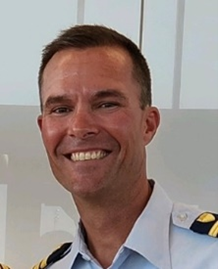
Captain Brian Maggi is an active-duty member of the U.S. Coast Guard who is a member of the permanent faculty at the U.S. Coast Guard Academy. Brian received his Ph.D. from the University of Rhode Island in Civil & Environmental Engineering with a focus in Coastal Engineering and is a registered engineer in the State of Florida. Brian earned a B.S. from the U.S. Coast Guard Academy (CGA) and an MSCE from the University of Connecticut. In addition to serving on two Coast Guard Cutters, CGC Confidence (WMEC 619) and CGC Edisto (WPB 1313), Brian served as a Project Manager, Branch Chief, and Executive Officer at U.S. Coast Guard Civil Engineering Unit Providence. Brian is currently the Department Head and Program Chair for Civil & Environmental Engineering at the U.S. Coast Guard Academy, New London, CT.
Case Study & Fragility Analysis of a Dune Reinforced with Geosynthetic Sand Containers
In many coastal communities, encroachment of infrastructure on the natural beach system constrains natural dune volumes and necessitates construction of structural and nonstructural mitigation measures for improved coastal resilience. Nature-based solutions, such as dunes reinforced with geosynthetic sand containers (GSCs), are increasingly being used to avoid the permanency of hardened structures like seawalls and revetments. Dunes reinforced with GSCs have the potential to protect communities from smaller storm events (e.g. 50-year storms) while at the same time providing flexibility in design considering the uncertainty regarding rates of sea level rise and the increasing destructive power of storm events.
However, there are currently no accepted design standards for these geosystems, and there is a gap in the knowledge of designers, planners, and decision makers of how to assess the performance and understand the tradeoffs of reinforced dunes for coastal protection systems. The objective of this research was to develop a fragility analysis of a Federally-funded GSC-reinforced dune in Montauk, NY. This dune was constructed in 2016 and experienced significant erosion of the protective berm and sand covering the GSCs during a 1-year storm event that same year. To perform the fragility analysis, field observations of erosion/deposition made over a 3-year period were used to calibrate 2-D and 1-D erosion models using the morphodynamic model XBeach. Damage was quantified as erosion of the berm, exposure of the GSCs, and movement of the GSCs. Monto Carlo simulations of erosion at a critical transect were performed using distributions of surge level and significant wave height for storms with return periods of 1, 2, 5, 10, 20, and 50 years, and the results were binned for each damage state. Movement of the GSCs was estimated using published relationships between a stability number and the surf similarity parameter.
The resulting fragility curves are consistent with the performance of the reinforced dune since 2016, including the amounts and frequency of annual replenishment needed at the site. This approach can be incorporated into various hazard mitigation and loss prevention tools and can better inform all stakeholders about the benefits and drawbacks of adaptive, nature-based coastal protection systems.
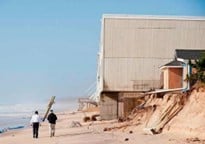
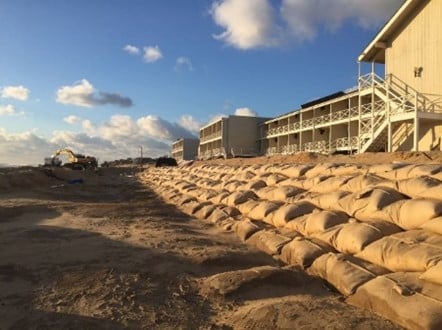
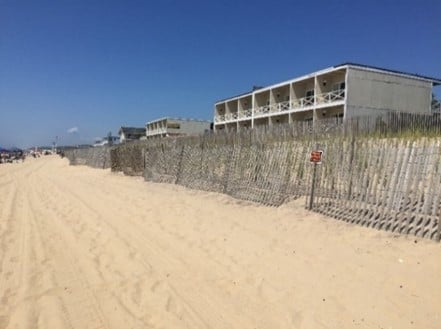
John R. Grillo, P.E., and Dylan Wong, Keller
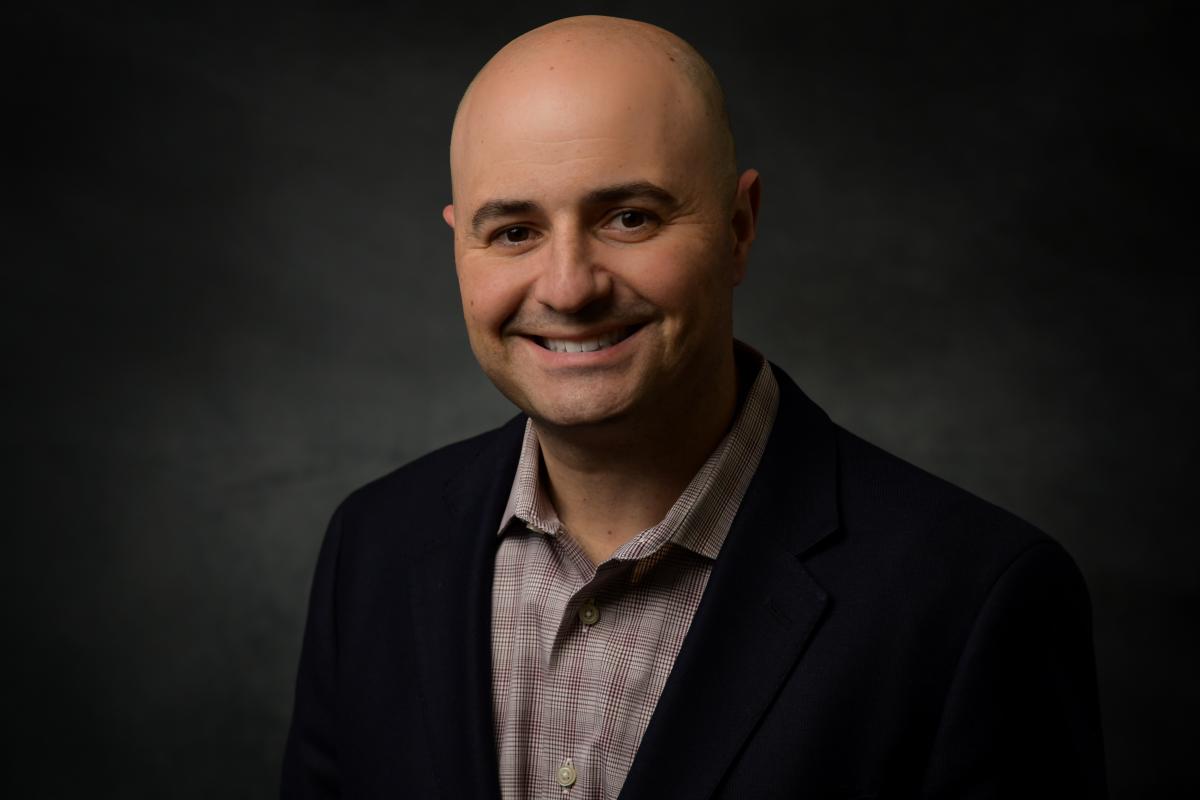

As a Project Executive at Keller North America, John Grillo, P.E., D.GE leverages over 19 years of experience as a geotechnical engineer. He holds a Bachelor of Science degree from Manhattan College and a Master of Engineering degree from Cornell University. John's childhood fascination with long-span bridges and engineering innovation has motivated him to make significant contributions to the fields of geotechnical engineering and specialty construction. Recognizing himself as a leader, mentor, and lifelong learner, John proactively seeks training opportunities to improve his skill set. He is dedicated to sharing insights on new technologies and practices with his colleagues. In his current role, John manages a dynamic team of project managers and engineers at the NYC Metro Area office. Over the course of his career, he has been instrumental in the design and construction of various foundation technologies. He has played a significant role in several noteworthy projects, such as designing a pit and pier underpinning system, constructing a new cellar for New York City Hall, developing a ground improvement strategy for the East Side Coastal Resilience Project in NYC, overseeing the design and management of the caisson support for the 800-foot-tall luxury tower near the Manhattan Bridge, and expanding Keller's ground improvement presence in the NYC area. John is a licensed Professional Engineer in both New York and New Jersey, and he is also a board-certified geotechnical Engineer. He actively participates in the industry, having held positions such as Vice President of the Board of Directors for the ADSC Northeast Chapter, Chairperson for the ASCE Geo-Institute Met Section, a member of The Moles, and currently serves as the IFCEE chair for 2024 and on the National Board of Directors for the ADSC.
Dylan Wong is a Project Manager at Keller North America, Inc. (Keller) and has been a member of the Keller team since graduating with his M.E. in 2016. Dylan spent his first several years in the field, assisting in project supervision and responsible for the QA/QC of a variety of geotechnical solutions, including excavation support, augercast piles, micro and macropiles, wet soil mixing, secant walls, rigid inclusions, and aggregate piers. As a Project Manager, his responsibilities include bidding and winning work, and managing ongoing projects to technical and financial success.
Case History: Engineering Resilience - Keller’s Contribution to New York City’s Fight for Coastal Protection Post-Sandy
The East Side Coastal Resiliency (ESCR) project, a response to Hurricane Sandy’s 2012 impact on NYC, aims to safeguard Lower Manhattan from future storms and sea level rise. The project features a 2.4-mile flood-protection system, including walls, gates, and an elevated East River Park. Specialty geotechnical contractors played a key role in raising the coastline by 10 feet. Keller’s scope involved the installation of about 2,500 aggregate piers, nearly 100,000 LF of wick drain and almost 500 micropiles. This presentation highlights the collaborative approach showcasing innovative solutions and logistical coordination in a challenging urban environment. The early completion of this phase highlights effective project management and teamwork, while transforming the area into a resilient and attractive public space.
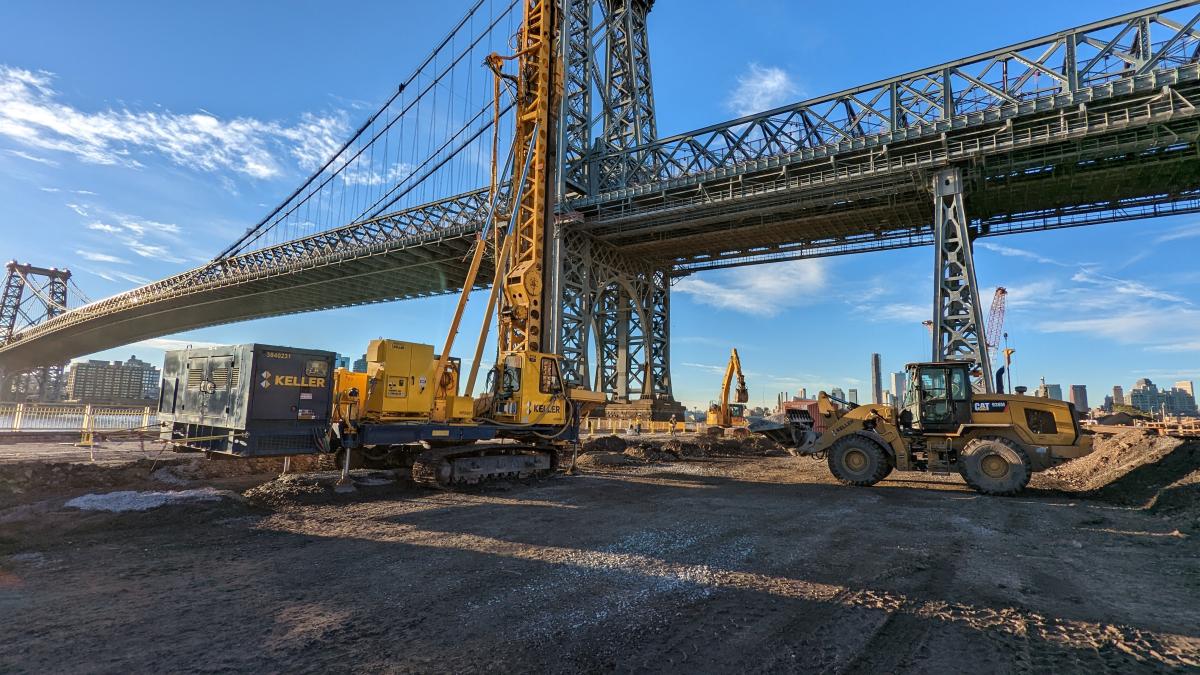
TPC River Highlands, 1 Golf Club Road, Cromwell, CT 06416
Table Sponsor (1 available) - $750
This sponsorship level includes your company logo on table placards, podium mentions, and 1 attendee registration.
Event Sponsor (2 available) - $500
This sponsorship level includes podium mentions and 1 attendee registration.
Program Sponsor (2 available) - $350
This sponsorship includes prominent placement of your company logo in the printed program for the seminar.




